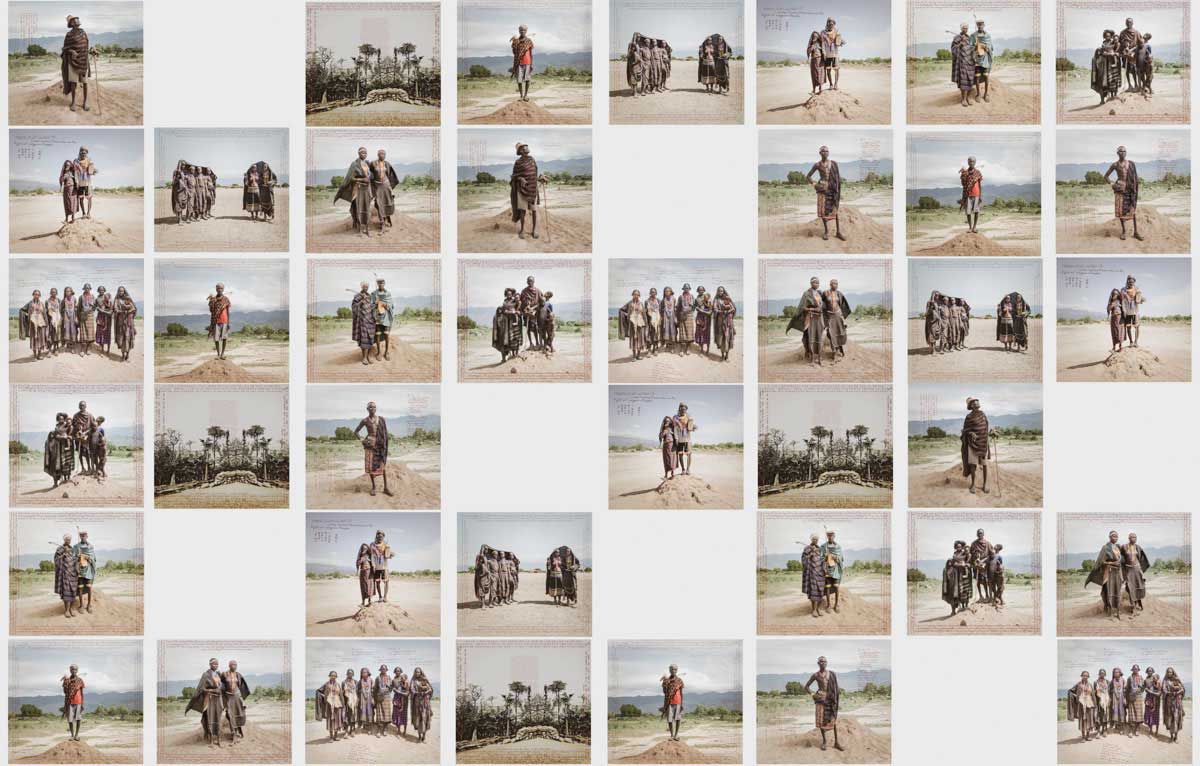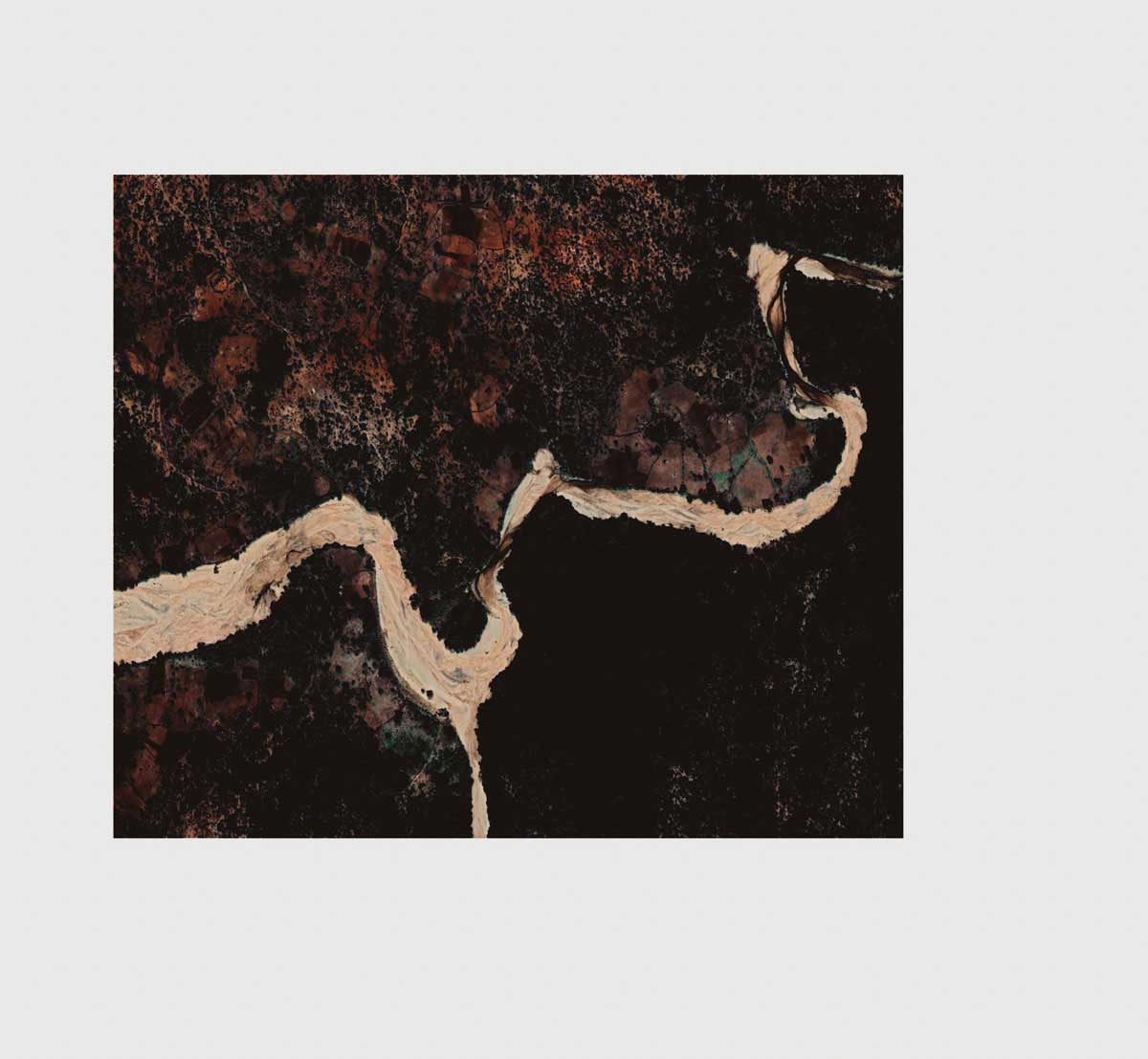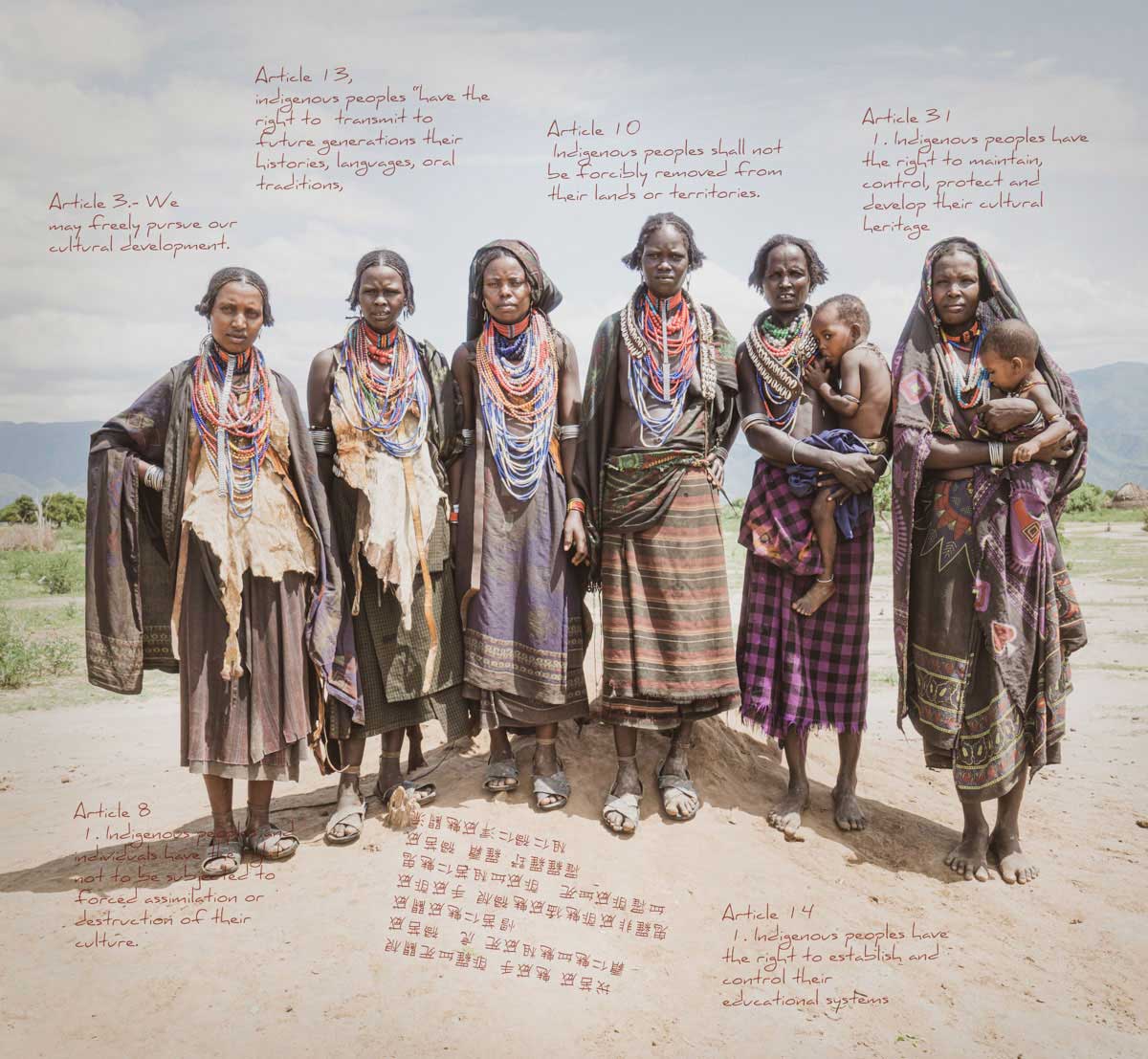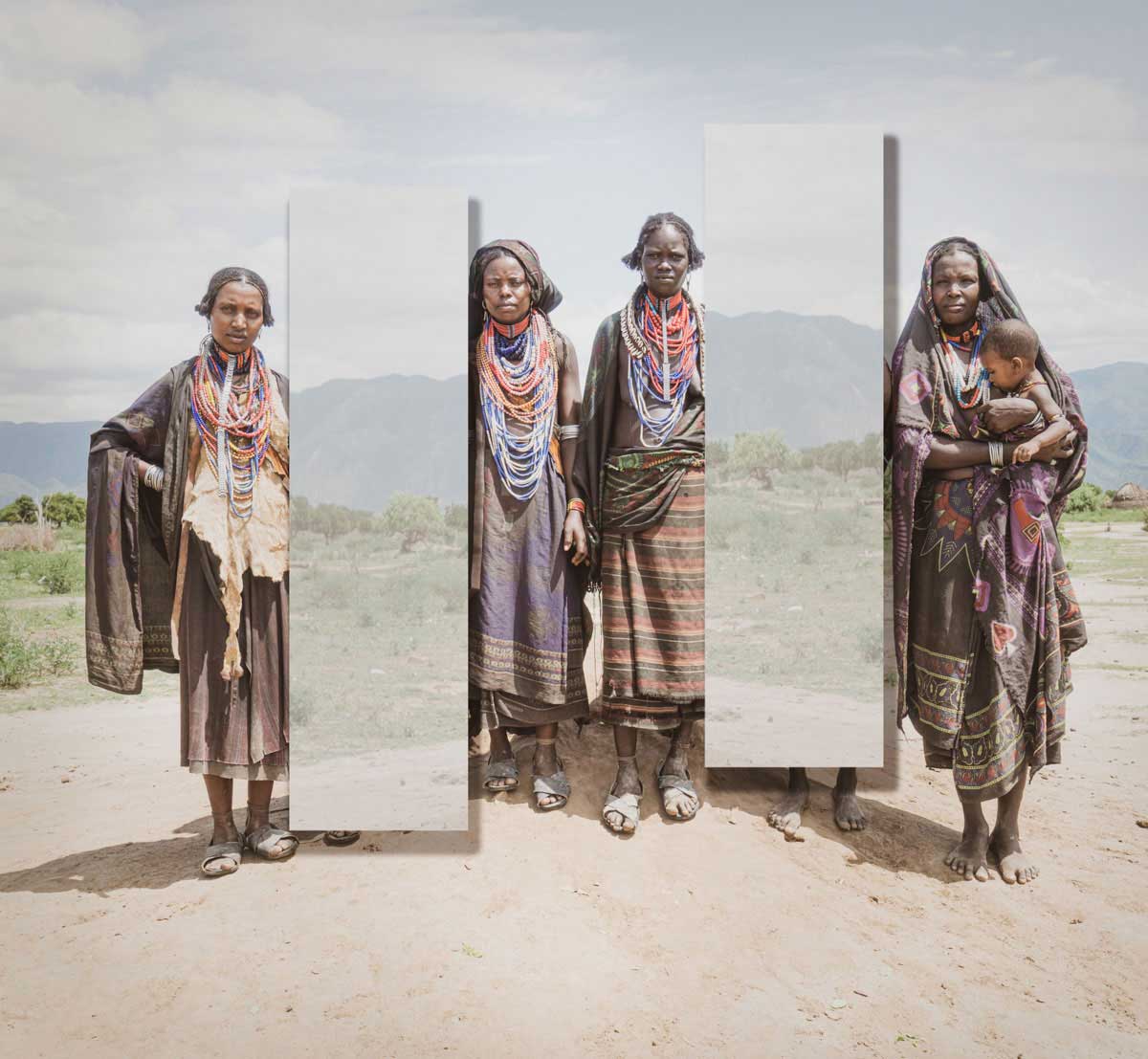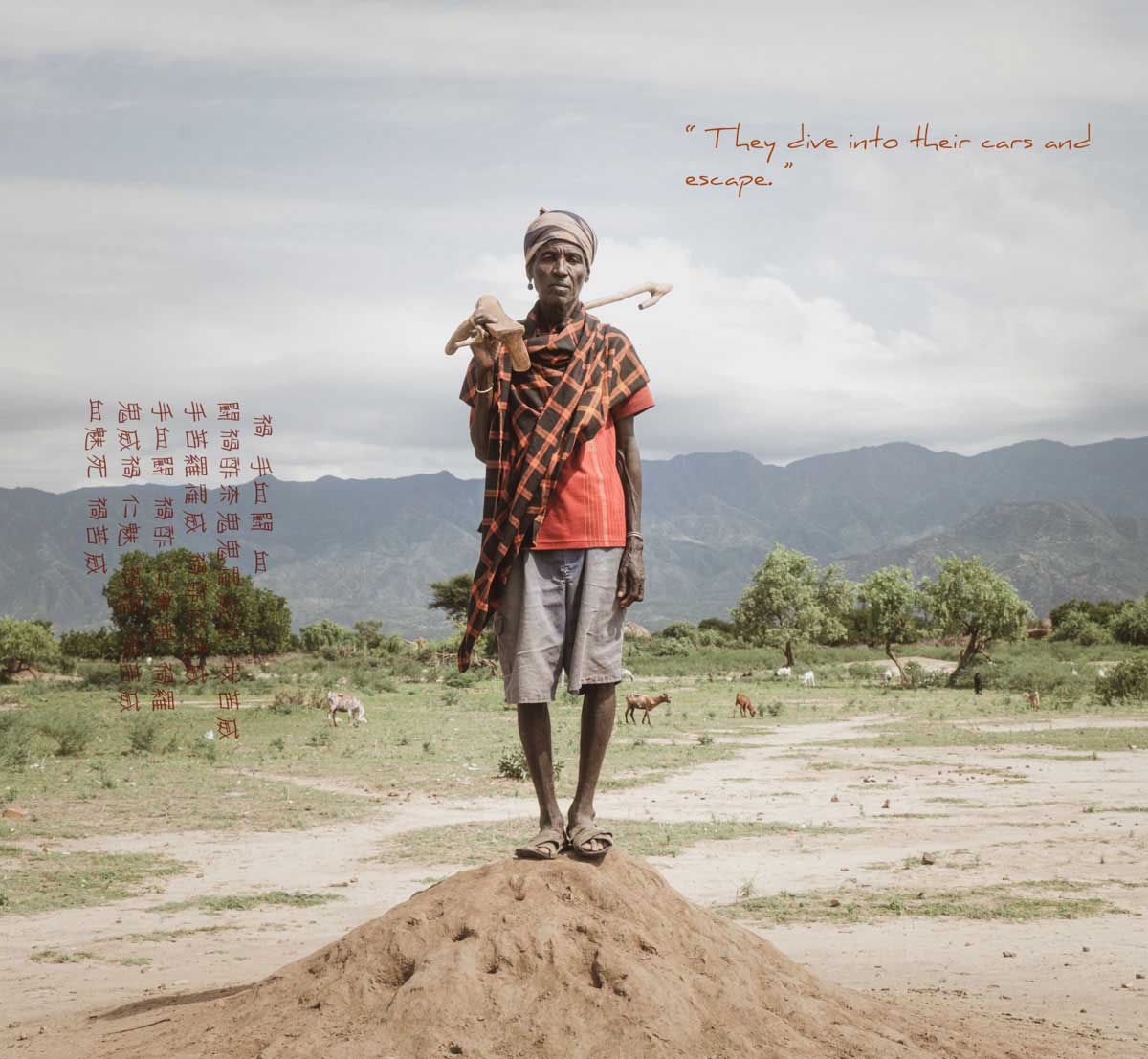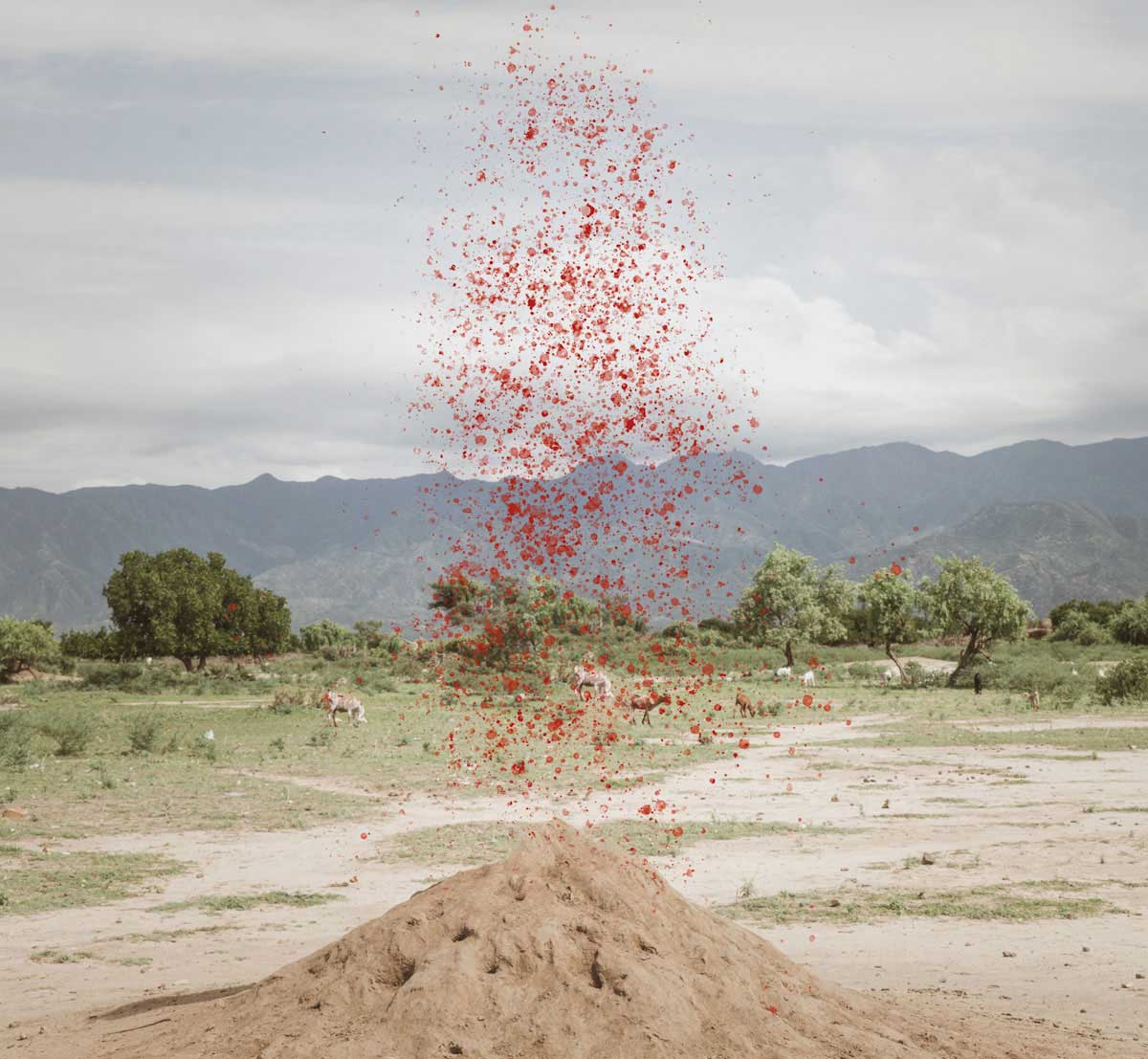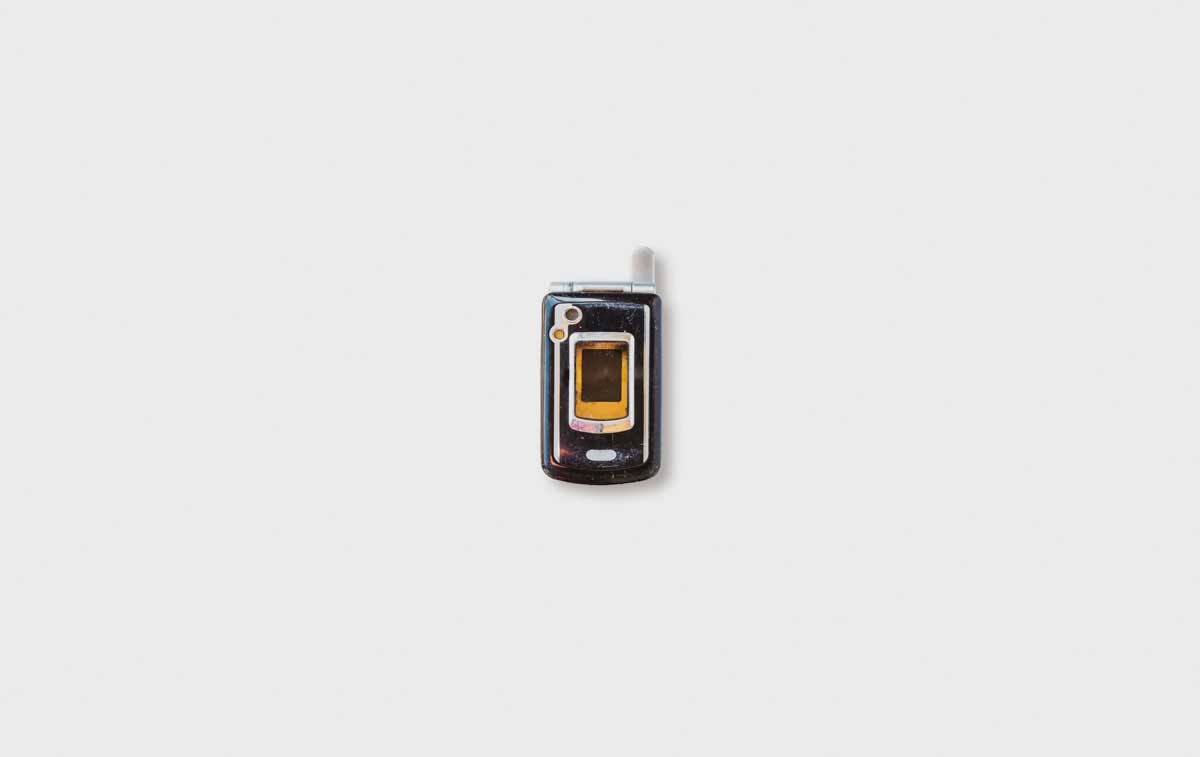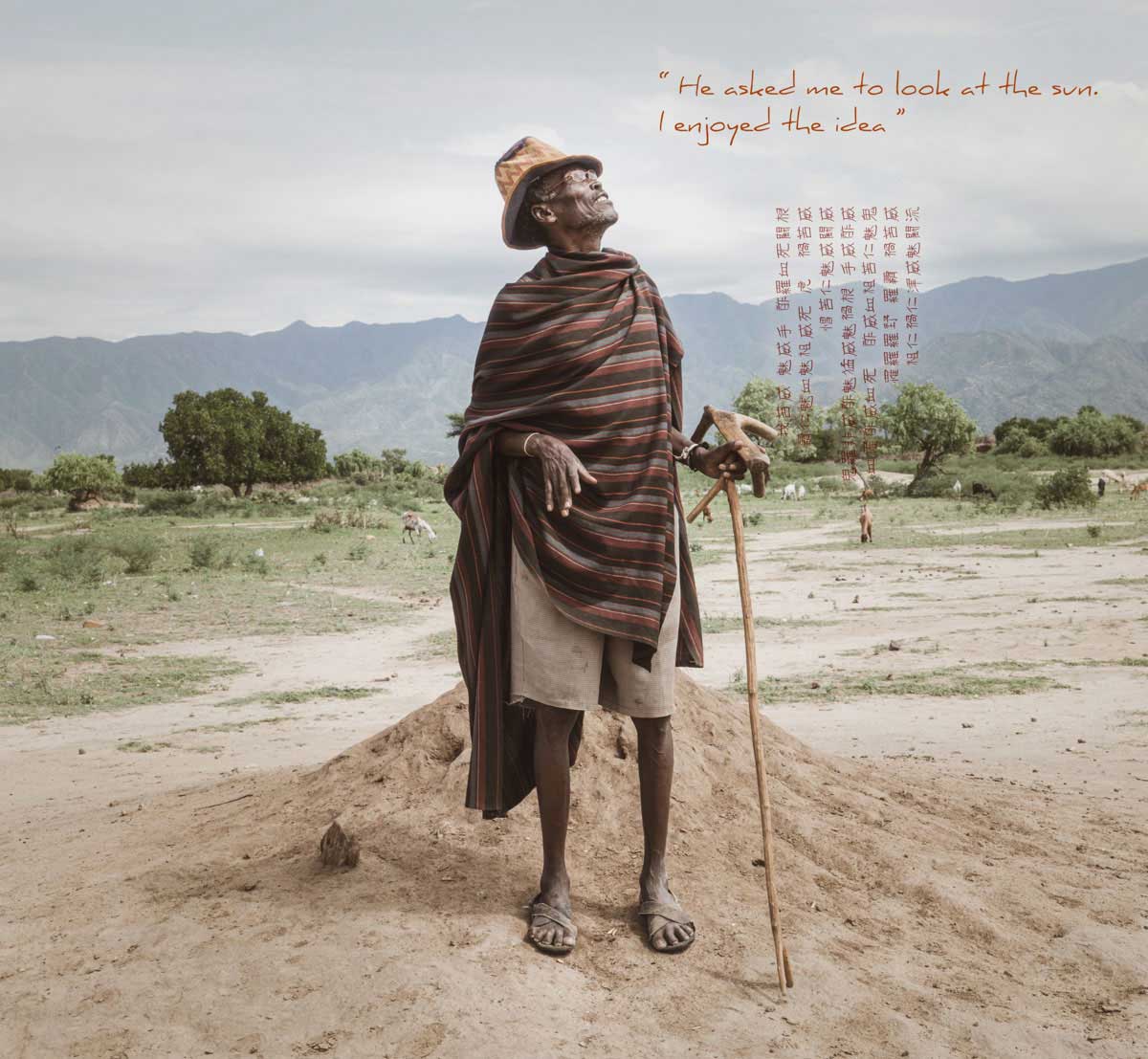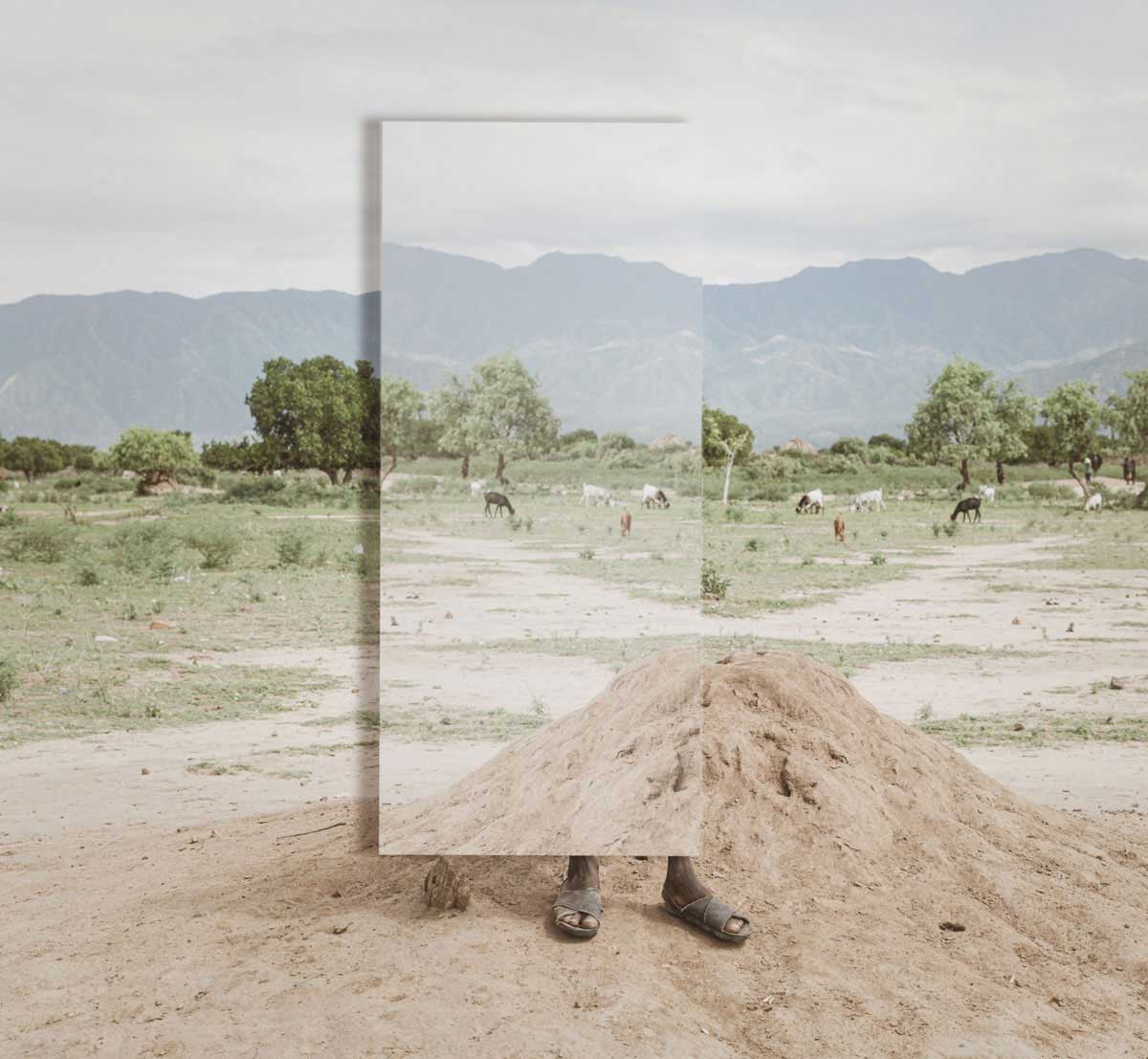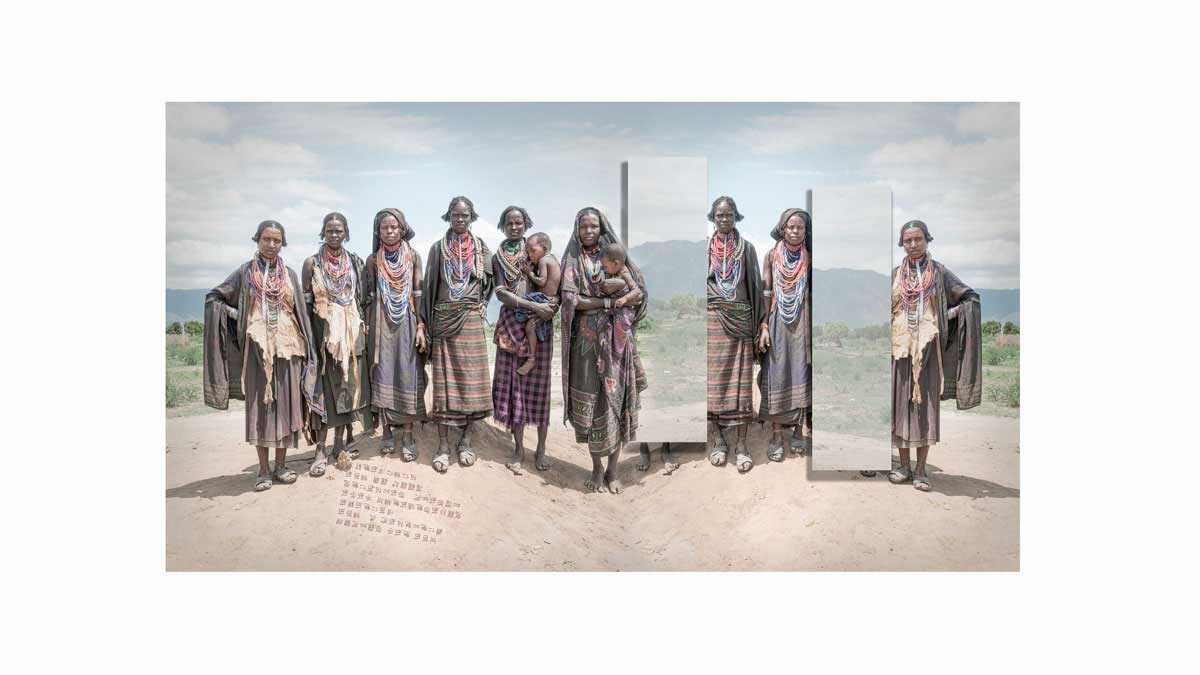The trucks continually roll past the roads that lead to their villages, spitting out so much dust that people living in the villages can no longer breathe.
I have been visiting Ethiopia and the Arbores for years. This situation, unfortunately, is not uncommon in the South of the country. In time, these individuals start to simply appear to be “the others.” First, this happens very gradually, and then the process accelerates. Due to the construction of roads – financed and built by the Chinese government- the Abore are invited to relocate and the relocation is disguised in an adaptation. This series obviously do not adhere to a strict documentarian style.
TO BE SEEN INSTEAD OF TO SEE.
TRYING TO UNDERSTAND HOW WE ARE SEEN FROM
THE OTHER SIDE.
As far as I’m concerned, if we have to place this in a genre, I find that the term docu-fiction applies more to the work as a whole. The purpose of this study is not to create a sociological account.
My goal is to delve into the other side of the mirror, to try to understand what it reflects and how we are interpreted by “the other” when he switches from being observed to being an observer. I wanted to underline the possible complicity between the indigenous-object of the visitor-tourist and the vision of the visitor-tourist.
INDIGENOUS PEOPLE ARE USUALLY THE TOPIC OF DISCUSSION,
BUT RARELY DO THEY HAVE A HAND IN SHAPING IT
In the classical proposal, indigenous people are usually the topic of discussion, but rarely do they have a hand in shaping it. In this series, text, objects, and images are placed in close proximity to each other so that the unconscious and conscious mind interacts, making the conscious signifying parallel universes, but at the same time, it reflects upon the convergence of parallel and convergent universes.
The more alien the consciously visible signs are, the more recondite the underlying interpretation is.
I FIND THAT THE TERM DOCU-FICTION APPLIES MORE TO
THE WORK AS A WHOLE.
I wanted to contextualize the images or put it another way: imagery does not only act as a piece of information. The text as a guide as well as real-life lived-in anecdotes which are told in the first person with the goal of informing the viewer of the real-life experiences.
Even after this is taken into consideration, there remains the question of the photographer’s gaze contemplating his subject and privileging some visions over others. The unavoidable bias, the ideas, beliefs, values, experiences, and preferences of the photographer are affecting the interaction with the images. To be seen instead of to see. Trying to understand how we are seen from the other side.
“There is of course a personal and direct involvement in the places that I later representbut (and), myartistic practice includes onsite photography and documentation, historical records research,as my own encounters and finding testimonials from other visitors as well as narratives.De-constructing whatever is called reality in order to build another new reality that is moreclosely related to my non- photographic memories.” -Harry Fisch
About Harry Fisch
Harry Fisch has been a photographer for more years than he cares to remember. He is the founder and leader of Nomad Photo Expeditions, a travel company that organizes unique photo tours and photographic expeditions all over the world.
Winner of the 2012 World National Geographic Photo Contest (places), and later disqualified ( due to deleting a plastic bag), his work has deserved many awards:
2014 at the Grand Prix de la Découverte, a finalist in the Sony 2012 World Photo Awards and selected in 2010 by Photoespaña in the section “Discoveries”. 2019 two IPA Professional Awards of Merit. 2019 finalist at the Travel Photographer of the Year. 2020 Bronze at the professional category on the MIFA (Moscow International Foto Awards). 2020 finalist at the IPA (International Photography Awards) as well as two honorable mentions on the same international contest. [Official Website]



